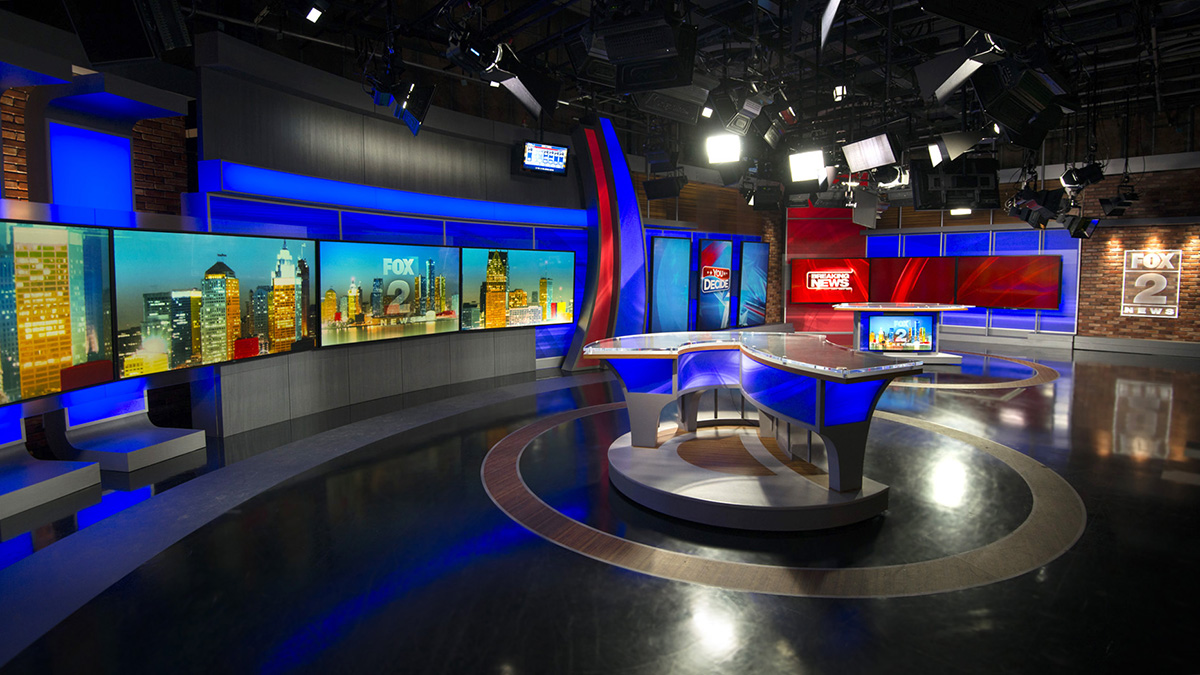Presenting your newscast in the best light, part one

Weekly insights on the technology, production and business decisions shaping media and broadcast. Free to access. Independent coverage. Unsubscribe anytime.
You have a large investment in your anchor team and reporters, not to mention all the hardware and support people who make the news happen. Perhaps you’re planning a new news set to give you a fresh look and new ways to showcase your stories in the best possible way.
While you wrack your brain over everything you might have overlooked in this process, now is the time to remember the importance of good lighting. Sets are the roadmap for how you tell your story. The lighting lets you see that road.
Of course, you want good lighting!
Done well, lighting can contribute much more than just basic illumination. It imparts visual depth and separation, helps set the mood, highlights areas of visual importance, and puts your anchors in a more flattering light. Lighting can be designed to cover the multiple camera shots with a consistency that frees you from iris adjustment during the show. Done poorly, it becomes a featureless mish-mash of light that makes the best set look flat and two-dimensional.
[quote]The goal here is to light the set with enough drama to make it an impressive setting, but never so much that it steals the show.[/quote]
A common mistake to avoid is the unbroken wash of soft light sources across the front of the set. It may seem like a “safe” approach to cover all the angles, but flat-lighting results in images that lack the visual cues for depth and dimension. It’s dull and uninteresting.
That’s probably not the benchmark you were aiming for. You, being the discerning industry professional that you are, will demand much more from your lighting than just basic illumination. You want your beautiful news set to look impressive, and your anchors to look attractive. Great lighting may not make up for a mediocre newscast, any more than a bad movie is ever saved by more special effects. But bad lighting will always look bad.
How to avoid these mistakes? You need the help of a Lighting Director. Specifically, you need a television Lighting Director who understands both lighting and television. In short, the guy with a Karaoke rig in his trunk probably is not the LD you’re looking for. If you’re working with a full-service scenic design group, they may have an LD on their team. If you’re part of a station group, you might have someone within the corporation who can handle it for you. This is not a “do it yourself” part of getting a new set, unless your situation is unusual.
How to make a flat medium look three-dimensional
Everyone in our business has heard of “Three-Point Lighting”. Let’s put a pin in that mantra of “Key – Fill – Back” and discuss what it’s all about. We want to make sure that people and things look like they’re 3-dimensional when shot with a one-eyed camera and projected on a flat screen.
You want your images to have depth and shape. To do that, you have to use the visual cues that don’t depend on stereoscopic (two eyed) vision. Highlight and shadows are the two main tools that the LD works with to accomplish this. Interestingly, this is the same problem that painters and professional photographers face.
The Key Light creates highlights and modeling shadows that define the shape. The Fill Light provides an indirect soft source that provides base illumination and moderates the effect of the Key Light by reducing the contrast of the shadowed areas. The Back Light provides a way to visually separate an object from its background, lending highlights to hair and defining the edges with a band of brightness. Just the right combination of keys, fills and backs helps impart a more dimensional sense of depth. Applied in the right proportions from exactly the right angles, you get a classic portrait lighting that will be both flattering and 3-dimensional.
Finding the right balance
Today’s modern news sets are video-rich environments, often with integrated LED lighting that are adjustable to a rainbow of colors. The goal here is to light the set with enough drama to make it an impressive setting, but never so much that it steals the show. Of course you want to highlight interesting parts of the set, but always aware of not being distracting. Always remember where you want your audience to be looking.
As important as they are, the set and the lighting play a supporting role in your shows. Your people must always be presented in a flattering light. The stories and the people involved are the point. We provide the ground on which those tales unfold. The best scenic designs help you tell those stories with adaptive and innovative scenic elements. Everything your audience sees should help put the information into a larger context and make it easier to understand.
Interactive opportunities to walk through and point out story elements can support greater clarity when used appropriately. Today, it’s much more than talking heads and going to the tape full.
As for the lighting, you should only notice that the anchors and the set look great. If your viewers are drawn to point out the lighting instead of being entranced by the stories, then something is out of whack.
Watch for the second half of Bruce’s insights into lighting design this December.
This article is part of our Focus On Lighting Design for TV, presented by Fluotec. View more from the series here.




tags
LED Lights, lighting a news set, lighting design, lighting design fundamentals, lighting for tv
categories
Broadcast Facility, Broadcast Lighting Design, Featured, Lighting and Lighting Design